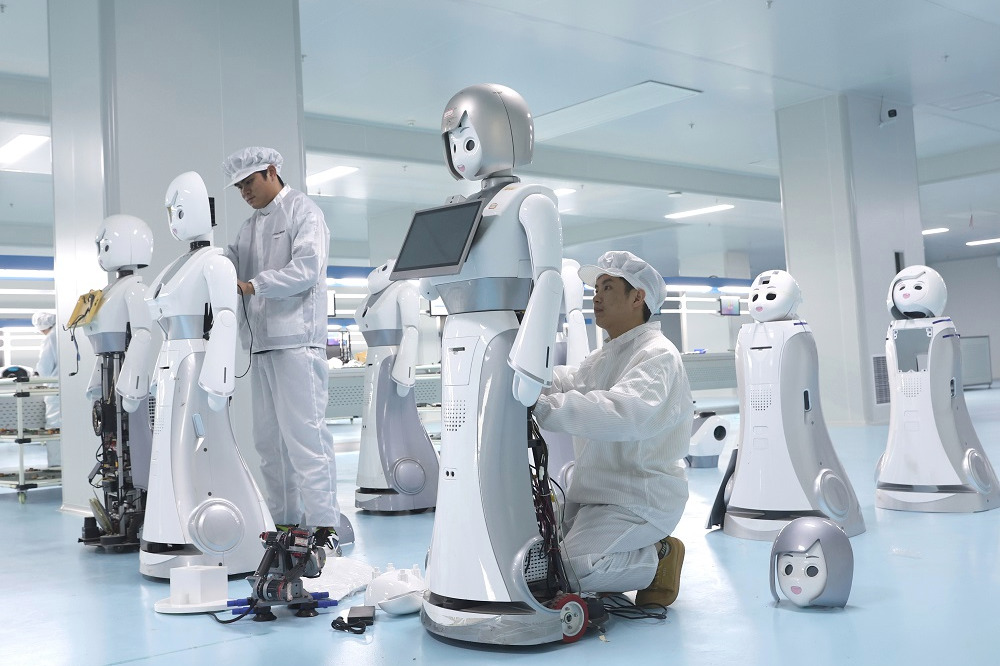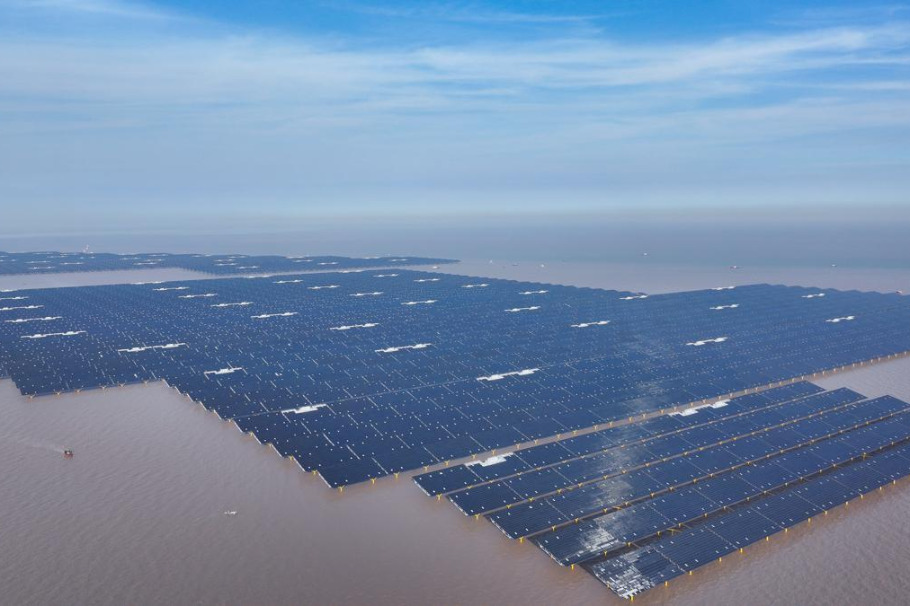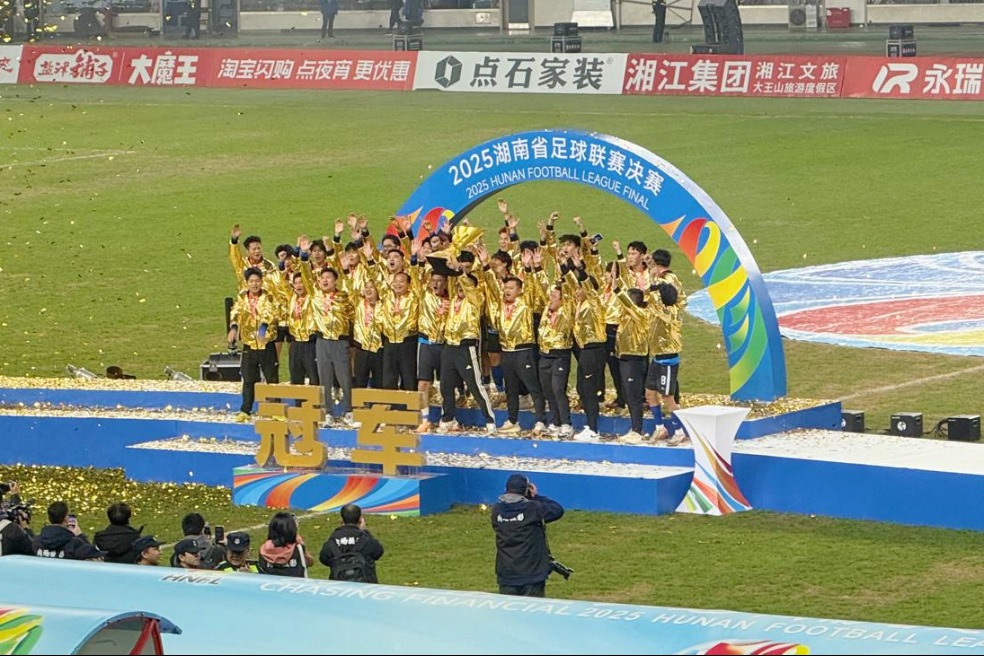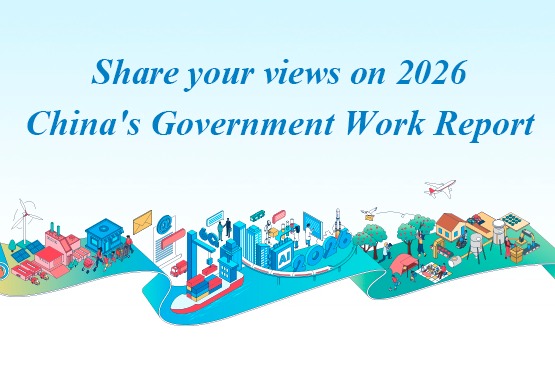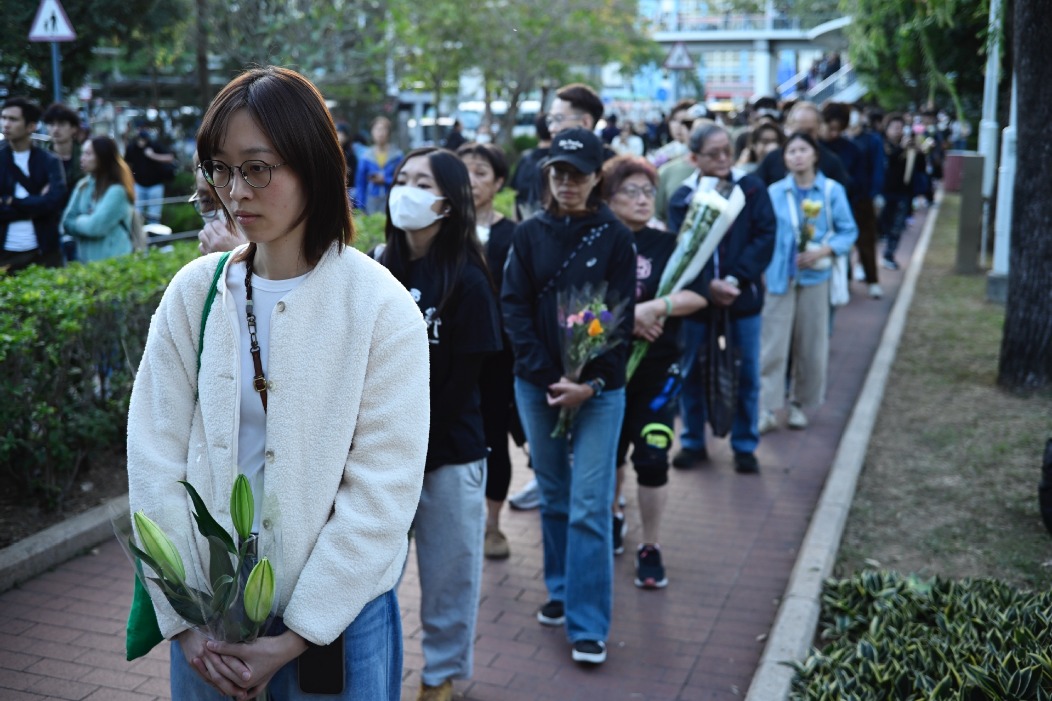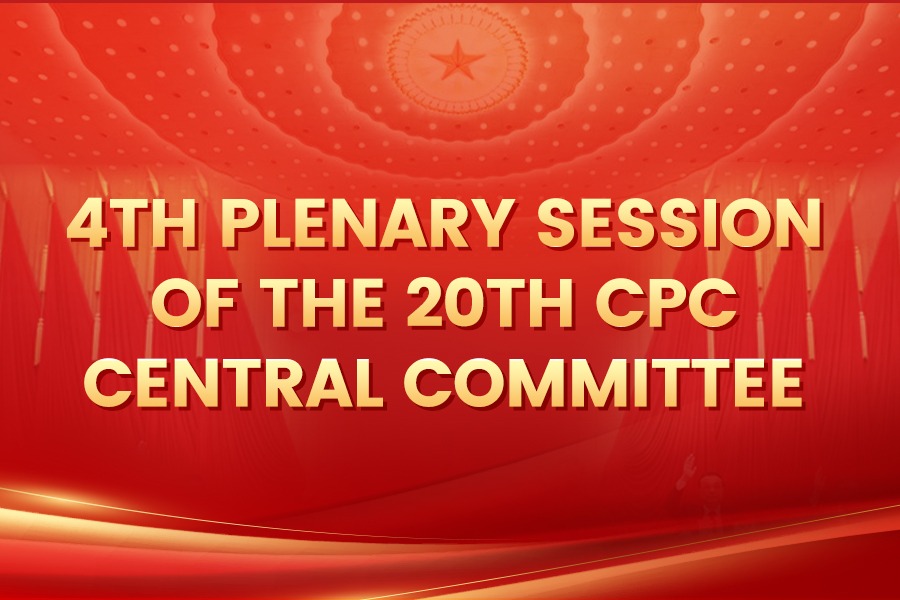Transcript of Vice Foreign Minister Le Yucheng's exclusive interview with the Financial Times

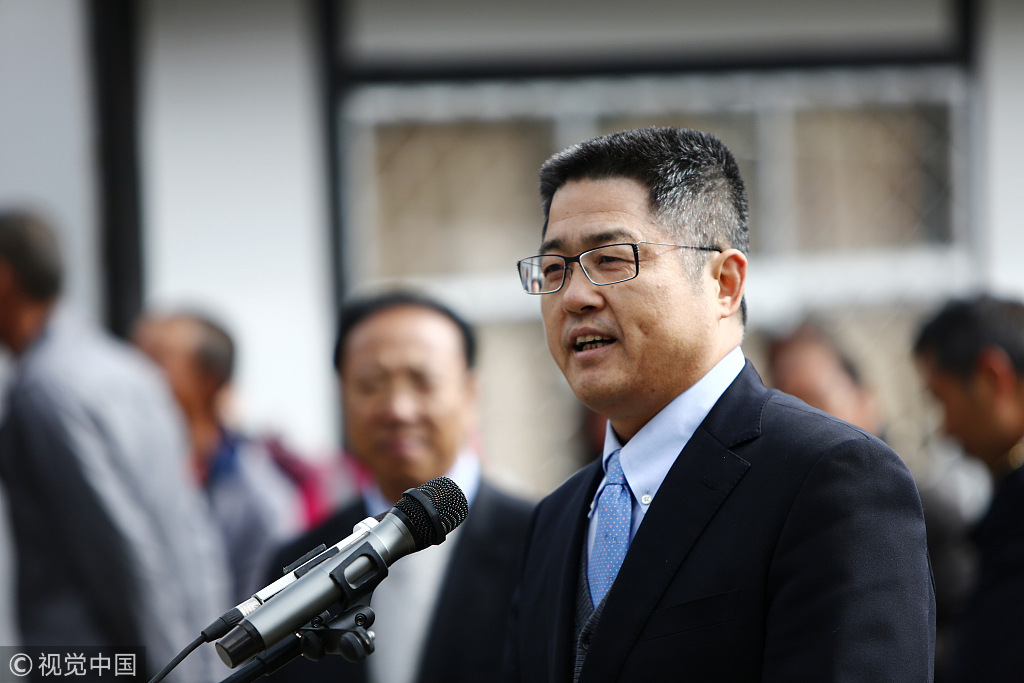
On Sept 10, 2018, Vice Foreign Minister Le Yucheng sat down with Jamil Anderlini, the Asia Editor of the Financial Times, for an exclusive interview. The following is the full transcript:
Jamil Anderlini: This idea of the Marshall plan, you hear this over and over. The government in Beijing says the Belt and Road Initiative shouldn't be compared to the Marshall plan. But many people still say it's similar. It's a lot of spending on infrastructure and it helps improve the image of China around the world. It's all done in peacetime. So isn't there some similarities? Or not.
Le Yucheng: It may appear that the two initiatives have something in common, as they are both about investment in infrastructure in peacetime. But other than that, they cannot be more different. First, time-line wise, the Belt and Road Initiative (BRI) is older and also younger than the Marshall Plan. Older because it draws inspiration from the spirit of the ancient Silk Road with over 2000 years of history, hence the modern version of the Silk Road. It is younger than the Marshall plan, because it was conceived in the 21st century, an era of globalization, and born out of opening-up and cooperation.
Secondly, the Marshall Plan was introduced during the Cold War dominated by rivalry between the United States and the former Soviet Union. Therefore it had clear geopolitical and ideological goals. The BRI, on the other hand, focuses on economic cooperation and connectivity.
In September 2013, President Xi Jinping first proposed the BRI, the "Silk Road Economic Belt", during his speech at the Nazarbayev University in Kazakhstan. I was there as the Chinese Ambassador. After the speech, President Nazarbayev expressed his clear support and applauded the proposal. That was the earliest international support that the BRI has received.
Why did President Xi choose to announce this initiative in Kazakhstan? First of all, Kazakhstan is a major country in central Asia. After all the turbulence and conflicts following the breakup of the former Soviet Union, stability has taken hold in Central Asia in 2013 and people there longed for development and cooperation. Secondly, central Asia is the land route linking China to the Middle East, Africa and Europe. Such a backdrop shows that the BRI was proposed for economic cooperation and connectivity.
Another feature sets the BRI apart from the Marshall Plan. The Marshall Plan drew a clear line at Western European countries and not including the former Soviet Union and those in Eastern Europe. But the BRI follows the principle of consultation, cooperation and benefits for all, featuring broad participation. This is determined by China’s foreign policy characterized by peaceful development and win-win cooperation, and means to provide a platform to explore the building of a community with a shared future for mankind.
In today's world, we see a trend of rising protectionism, unilateralism, bullying and anti-globalization. We hope to pool strengths for closer international cooperation through the BRI. It is highly relevant given the current international landscape, and represents a useful effort in building a more fair and equitable new international order and in the reform of the global governance structure.
Jamil Anderlini: Thinking about this idea of soft power and China's influence of power around the world. Do you think the Belt and Road is on balance enhancing China's soft power or hurting China's soft power right now?
Le Yucheng: The implementation of the BRI in the past five years shows how it has caught on internationally. We held the first Belt and Road Forum for International Cooperation in May last year, which attracted unprecedented representation of over 140 countries and 80 international organizations, including leaders from 29 countries.
Europe is an important partner for the BRI. Eight leaders of European countries and representatives from the UK, France, Germany and the EU attended last year’s Belt and Road Forum. So far, we haven't heard any single European leader opposing the BRI. French President Macron expressed his support and interest during his visit to China last January. Philip Hammond, Special Envoy for the British Prime Minister and Chancellor of the Exchequer, described the UK as a natural partner for the BRI when addressing last year’s forum. Others have said that the BRI is a bridge for China-Europe cooperation, not a high wall.
During the 20th China-EU Summit last July, the two sides agreed to create greater synergy between the BRI and EU’s development initiatives, including the Investment Plan for Europe and the Trans-European Transport Networks. The UK has set up a City Expert Board for BRI cooperation. Twenty-five European countries, including the UK, France and Germany, have joined the Asian Infrastructure Investment Bank (AIIB), which has close ties with the BRI.
The just concluded Beijing Summit of Forum on China-Africa Cooperation (FOCAC) was attended by 51 African leaders, including 40 presidents, 10 prime ministers, and one vice president. They all spoke highly of the BRI. Up to date, 37 African countries have signed agreements or MOUs with China on BRI cooperation, taking the total number to over 130.
Many countries see the BRI as an opportunity and a platform for closer cooperation with China, including Latin American countries. Originally, the BRI did not extend to Latin America. But they say Chinese porcelain was discovered there, showing that they are also part of the BRI. This speaks to the interest of many to be partners of the BRI.
The BRI has been warmly welcomed to an extent that has far exceeded our expectations. Let me share with you an anecdote. When President Nazarbayev was in Beijing for the Belt and Road Forum and saw the level of attendance, he asked the Chinese leader if China had ever expected such strong attraction and impact of the BRI when it was first announced. The Chinese leader said, yes and no. Yes, because the BRI is in line with China's development stage and responds to the trend of the times as well as the aspirations of people across the world. But what we didn’t expect is this overwhelming support. That answer really shows how the BRI has caught on.
Jamil Anderlini: One criticism we've heard from some countries. One thing that people have raised in some areas is the idea of debt. The idea that many of the loans or the investments involved loans from China to these countries may make these countries take on too much debt and they won't be able to fund them, or they won't be able to repay these loans. And one example we hear a lot is the example of Sri Lanka, which seems to borrow too much and is not able to repay and then had to hand over the Hambantota port. What's China's plan to make sure that these governments can pay back the loans that are involved?
Le Yucheng: Debt is a neutral term commonly used in economics. The debt issue we are talking about here is not necessarily linked to the BRI. To start with, the cause for debt is complicated and involves many factors, including economic fundamentals, historical debt baggage, or changing international and economic environment like rising protectionism, interest rates hike in some advanced economies, appreciation of major reserve currencies as well as plummeting commodity prices.
I've been to Equatorial Guinea, a small country in Africa. It used to be a very poor country, and then they discovered oil. Between 1997 and 2007 when the oil price was at its height, the country’s GDP grew by over 26% for 10 years in succession with a per capita GDP exceeding US$20,000. However, in recent years, the declining oil price has brought its GDP growth rate into the negative territory, -5.3% in 2017. And the per capita GDP fell to US$8,000. That shows how changes in external economic environment affect these countries. Republic of the Congo faces a similar situation. It has taken on a lot of debt with western oil brokers.
Secondly, China is a latecomer in international investment and financing markets. It's just been five years since the BRI was put forward. And it hasn't been that many years since Chinese companies started to explore the global market. So one should not hold China accountable for all the debts.
You mentioned Sri Lanka. I have followed the situation in Sri Lanka closely. According to the 2017 annual report issued by its central bank, Sri Lanka's total foreign debt is over US$50 billion. China only accounts for about 10%. Plus, over 60% of Chinese loans are concessional loans, with an interest rate much lower than the international level.
Sri Lanka has issued a lot of sovereign bonds to attract American and Western investors. So government financing constitutes a major source of market lending, which takes up 39% of the total external debt. The country has also borrowed from other sources, the ADB 14%, Japan 12%, and the World Bank 11%. China only accounts for about 10%.
About the Hambantota port, the project was built and run at the request of the Sri Lankan side. For years, Sri Lanka had hoped to make good use of its geographical location and build the country into a logistic and warehouse hub in the Indian ocean. In the past, because of civil war and conflict, they were unable to do so. Now the situation is stable, to build an international port is back on their agenda. And they looked for help from China.
The idea of the operation right also came from the Sri Lankan side. The Chinese company was hesitant at first because they were not familiar with such situation. After careful studies and rounds of consultation and negotiation, the Chinese company overcame difficulties and reached agreement with the Sri Lankan side to set up two joint ventures, and had acquired corresponding stakes.
I want to stress that the sovereignty over and ownership of the Hambantota port belong to Sri Lanka throughout the process. When it is done, if it so needs, Sri Lanka can repurchase part of or all stakes from the Chinese company until it takes it all back.
In addition, Chinese investment is mainly in the infrastructure sector. It may take a long time to yield returns, but they are valid assets whose value will grow in time. So in the long run, it is beneficial to host countries. Just like when young people buy a house with mortgages, they may take on some debt, but they have a place to live and they have their own assets.
We Chinese often say that if you want to get rich, build roads first. Africa has for many years received certain assistance from Western countries. But why couldn't it achieve faster development? One important reason is the underdevelopment of infrastructure. I have been to Africa and I know that many African countries, although in the same continent, are not connected by direct flights, railways or even roads. You have to fly to Paris or Zurich in order to get to another African country. How can the economy grow with such underdeveloped infrastructure. By investing in infrastructure, China is helping address the bottleneck that's been holding back Africa’s development.
So Africa has a great need for infrastructure, including roads, railways, power plants, airports and sea ports. Chinese investment in these areas will help boost the local economy in time. A road is not just a means of transportation, but an economic belt or corridor that will catalyze the development of the whole region.
According to Forbes, Chinese investment in Africa's infrastructure has generated US$50 billion in revenue for host countries every year. The Mombasa-Nairobi railway China helped build has created nearly 50,000 jobs for Kenya and driven its GDP up by 1.5%. CPEC, the China Pakistan Economic Corridor, contributed 2.5 percentage points to Pakistan’s GDP in 2016, which grew by 4.7%. In Sri Lanka, the Puttalam coal fired plant built by China is now providing over 40% of the country's electricity, benefiting 20 million plus people. About one third of additional electricity added to grid in Africa is attributable to China-invested projects.
In the past five years since the BRI was proposed, four railways undertaken by China in Africa were completed, i.e. the Mombasa-Nairobi railway, the Addis Ababa-Djibouti railway, the Abuja-Kaduna railway in Nigeria and the Benguela railway in Angola. The fact that China has delivered all these much needed infrastructure in a short period of time shows the BRI is making a big difference.
When making investment decisions, Chinese companies make sure that they are economically viable, with rigorous feasibility study and evaluation and by factoring in credit rating. We do things according to our ability. Likewise, we advise countries to act within their means and not to overstretch themselves when they consider projects that are not in line with local conditions.
Some countries may face difficulties in repaying the debt. We understand the situation they are in and will not press down hard on them. When they encounter difficulties, we will have bilateral consultations with them and take flexible measures. During the FOCAC Beijing Summit, President Xi announced that for some African countries, including the least developed countries that have diplomatic relations with China, the debt incurred in the form of interest-free loans due to mature by the end of 2018 will be exempted.
Some media reports say China has created "traps" for certain countries. We find it unacceptable because we have made contributions to those countries. What does China bring to those countries? Is it a pie or a pitfall? Let facts and results speak for themselves. Better be patient for a while and do not jump to conclusions.
The media likes the word "trap", the "Thucydides trap", the "Kindleberger trap" and the "middle income trap". In our view, it represents a rather pessimistic perspective. We Chinese always believe that there are more opportunities than challenges, and more solutions than problems. Even in crisis, there lies opportunities. Being optimistic is important, which is also true when it comes to the debt problem. For those countries that are grappling with debts, once they pull it through, their economy may face a bright outlook. China was also financially stripped at some point in the past. But we dealt with it and made progress in our development. It is not realistic to expect a happy life to fall into your lap without working hard for it and taking risks, including taking on some debt in this case.
Jamil Anderlini:You were the Ambassador to India. So I do want to ask about India. They are obviously a bit worried about CPEC because they claim some of the territory that it goes through. So I'm wondering, is it a problem that India is not so far involved in this. And what might be the next step to try and deal with that?
Le Yucheng: Indeed, I served as the Chinese Ambassador to India. I know that although China and India may not see eye to eye on every issue, the two countries face similar development agenda. This year, President Xi and Prime Minister Modi met three times. One important consensus they reached is that China and India need to be cooperation partners that support each other in realizing their respective dreams. China-India relationship is now in a new stage and showing a new momentum.
Kashmir is an issue between India and Pakistan that is left from history. We believe the two parties should resolve the issue properly through dialogue and consultation. We don't side with either party.
China borders Pakistan-controlled Kashmir, which is the only passageway linking the two countries. China is involved in some livelihood and economic development projects there. Those projects are not directed at any third party, and China has no intention of intervening into their dispute.
India may have its own views on the BRI. But China and India are cooperating closely on practical projects. TBEA, a Chinese company, has set up an industrial park in Gujarat, which is welcomed by the local community. China is also helping India increase the speed of its existing railways and build new railway stations. The two countries are also working on Bangladesh-China-India-Myanmar Economic Corridor. In addition, India is a founding member of the AIIB. About 20% of the projects funded by AIIB are in India. So India has gained tangible benefits from the BRI.
Jamil Anderlini: Thinking about Pakistan. It's interesting because I was there for about five days. The security situation seems much better than it was just a few years ago. I wonder it's still not very safe. So how does China make sure that these projects are safe? For example, in Pakistan? Maybe Afghanistan? Could you ever see a situation where we put Chinese troops or Chinese security to protect the BRI and Chinese workers and citizens?
Le Yucheng: The BRI involves a lot of countries. In some places, the situation is not secure yet. Primarily, we look to the government of host countries to provide for the security of BRI projects. The BRI cooperation agreements we have signed with various countries include provisions that the host countries will take up the security responsibility. For instance, Pakistan has set up a special force for the security of CPEC.
In our view, the lack of development is the biggest security risk. Progress made in the BRI will contribute to greater regional security. We have no intention of using the security of the BRI to set up overseas military bases, as we pursue an independent foreign policy of peace and a defense policy that is defensive in nature.
That said, as a major country, China shoulders special responsibility for world peace and security. And China has taken part in the UN-led peacekeeping operations and efforts against terrorism and piracy. As Chinese servicemen and women help maintain peace in other parts of the world, far away from home for months even years, they need logistic support including supplies. The Djibouti base is set up for that purpose.
It must be pointed out that China's military presence overseas is much smaller and much less than other major countries. We never seek military intervention in other countries, least of all do we infringe upon other countries’ territorial sovereignty.
To protect the interests and safety of Chinese nationals overseas, the Foreign Ministry has put in place a consular protection mechanism, which however, has nothing to do with overseas military bases. It is one of the many means for the government to protect Chinese nationals.
Jamil Anderlini: I want to ask you about Xinjiang. Can you tell us what's the main reason for the security crackdown in the last couple of years? What does it mean for Belt and Road going into the neighboring countries through that region?
Le Yucheng: For Xinjiang, stability is of paramount importance. A few years ago, extremism and terrorism, violent terrorism in particular, caused casualties and economic losses not just in Xinjiang but also in cities including Beijing and Kunming. Therefore, the government must resolutely crack down on terrorism. Being soft on violent terrorists is tantamount to being harsh on the people.
In recent years, we have channeled substantial resources to Xinjiang for maintaining stability and promoting development. The measures we have taken have paid off, as evidenced by greater stability, a growing economy and a stronger sense of security among its people. In 2017, Xinjiang's economy grew by 7.6%, higher than the national average. Last year, I took a trip to Xinjiang, and I saw close-up the stability and development there, which has been the result of all the efforts we have made, efforts that are endorsed and supported by the people of Xinjiang. The Chinese government will not allow Xinjiang to become another Syria, Libya or Iraq. Further more, the spillover of instability in Xinjiang may affect stability in Central Asia and the Middle East, or even Europe.
The BRI will also contribute to Xinjiang's stability and development. As an important gateway linking China to regions westwards, Xinjiang, together with other western provinces, have become the forward in opening up, no longer the backfielder they used to be. This marks a new dimension of China's opening up.
Jamil Anderlini:The US has said they want to look at the idea of the Indo-Pacific, and they want to fund some investments there. Do you think this is something that can work with the BRI? Or is it a competitor for the BRI?
Le Yucheng: The Asia-Pacific has a huge demand for infrastructure investment and connectivity. At the same time, there is a big gap in resources. Some institutions estimate that every year, the Asia-Pacific needs about US$1.7 trillion of investment in infrastructure. Apparently, that cannot be filled by China alone. Everybody needs to pitch in. We welcome various initiatives that will be conducive to regional development and hope to see them complement and reinforce each other.
The United States has announced its Indo-Pacific strategy or Indo-Pacific Economic Vision. As we have seen, there are various versions of Indo-Pacific strategy, the Japanese, American and Indian version. Southeast Asian countries are also working on their own version. We are open to all initiatives that will help regional development and cooperation. What we are firmly against is attempts to use the Indo-Pacific strategy as a tool to counter the BRI or even contain China. We hope to see parties working in concert rather than pursuing their own agenda and undercutting each other's efforts. If that’s the case, instead of one plus one equals more than two, the result will be one minus one is less than zero. Whether it is the Pacific Ocean, the Indian Ocean, or the Atlantic Ocean, they should serve as a broad platform that everyone brings into play their strengths, not a theater for rivalry. Parties should work together in concert instead of in contest.
The BRI is an open initiative, not an exclusive bloc. It aims to connect development strategies rather than seek to exclude each other. We have been working with various parties for trilateral cooperation or multi-party cooperation in the BRI framework. Siemens has partnered with over a hundred Chinese companies to explore the BRI market. Standard Chartered will be providing at least US$20 billion of financing to BRI projects by 2020. GE has landed US$2.3 billion of orders from the BRI. Such trilateral cooperation should be encouraged in the future.
Jamil Anderlini: I want to go back just very briefly to Xinjiang. The media is talking about these camps in Xinjiang. Do you see these camps as part of the solution? Like this is part of stabilizing the region?
Le Yucheng: Again, stability is most important for Xinjiang. Why are there terrorists or extremists and their organizations in Xinjiang? Because some people are brainwashed by radical ideologies, especially radical Islamic ideologies, and choose to pursue a wrong and destructive cause, posing a threat to their family and the public and ruining their own life. We need to help them deradicalize, return to a normal life and reintegrate into the society. When there is an illness, treat it before it is too late. Whenever there is a sign of people being influenced by radical religious ideas, we need to help them rather than sit on our hands and do nothing as they move to the point of no return.
The government has done so within the confines of law, including the criminal law and the anti-terrorism law. All governments act to uphold their national security in accordance with the law. The UK is also a victim of terrorist attacks. On 7 July 2005, London was hit by a series of bombings. One of my colleagues lived close to one of the underground stations that was hit by the bombing. His five-year-old kid experienced that horrible tragedy and is still traumatized, unable to forget that experience even today. All governments are obliged to keep the country and their people safe.
Jamil Anderlini: Chinese government and Chinese officials often say China is a developing country and rightly points out that per capita GDP is still much lower than other countries. So do you think maybe this is a bit early for China to be doing something like BRI while there are so many challenges back home. Do you think that maybe that some of this investment and money could be spent back here in China?
Le Yucheng: China is still the largest developing country. Our per capita GDP ranks behind 70th in the world, and we have over 30 million poor people, which is half of UK's population. And we do face the daunting challenge of inadequate and unbalanced development. But I don't think it is too early to pursue external cooperation at this point. On the contrary, that’s what is needed at the moment. Because today's world is a globalized world, countries' interests are more closely intertwined than ever before, and China's interests are deeply integrated with the rest of the world.
China imports about 70% of its oil needs and more than 90 million tons of soybeans every year. We also depend heavily on imports for many other commodities, which makes it impossible for us to develop behind closed doors.
President Xi has made clear repeatedly that the door of reform and opening up will not close, but will only open wider and wider. We welcome foreign investment to China. At the same time, we also encourage Chinese companies to explore the global market.
This year marks the 40th anniversary of China's reform and opening up. It's about time to take it to a higher level. The BRI is an upgraded version of China's reform and opening up. It will help diversify trade, allocate production factors and development resources globally, and improve the reform and opening up structure of China. Following the coastal areas, the hinterland is rapidly catching up, making the western region the new forefront of China's opening-up.
We hope that through the BRI, we can achieve greater development and also be better positioned to help other developing countries. We believe that people, or countries for that matter, can't just care about themselves, put self-interest above everything else or seek a beggar-thy-neighbor approach.
For the past five years, the total volume of goods traded between China and BRI countries has exceeded US$5 trillion. Direct Chinese investment surpassed US$70 billion, and the total value of contracted projects is over US$500 billion.
During last year's Belt and Road Forum, China and relevant countries reached a total of 279 outcomes, which have been or on course to be delivered. Around the world, China has helped build 82 economic and trade cooperation zones, contributing over US$2 billion of tax revenues and over 200,000 jobs to host countries.
With our cooperation, Kazakhstan, the largest landlocked country, has a sea outlet and can now access the Pacific through the Lianyungang port in China. The China-Laos railway is expected to turn Laos, a landlocked country, into a land-linked country. And Maldives, a country of islands, has seen its dream of being connected by bridge come true. For the first time in its history, Belarus has its own passenger car production facility, and the industrial park set up by China there is the largest in Eurasia.
The construction of the Jakarta-Bandung railway and the Belgrade-Budapest railway has been kicked off. Four railways have been completed in Africa, and a number of railways and roads are under way. These are the early harvests of the BRI and they fully demonstrate that the BRI is in line with China's development stage. Rather than being ahead of the times, the BRI is in keeping with and leading the trend of the times.
- Defense spokesman: PLA drills around Taiwan justified
- Chinese fantasy animation hits Vietnamese theaters amid holiday surge
- BBC documentary reveals Guangdong's wild side
- Hangzhou 'Bunny Officer' goes viral for gentle traffic management
- From lab to life: humanoid robots' 'coming-of-age' year
- Video of PLA's drills around Taiwan Island released
















